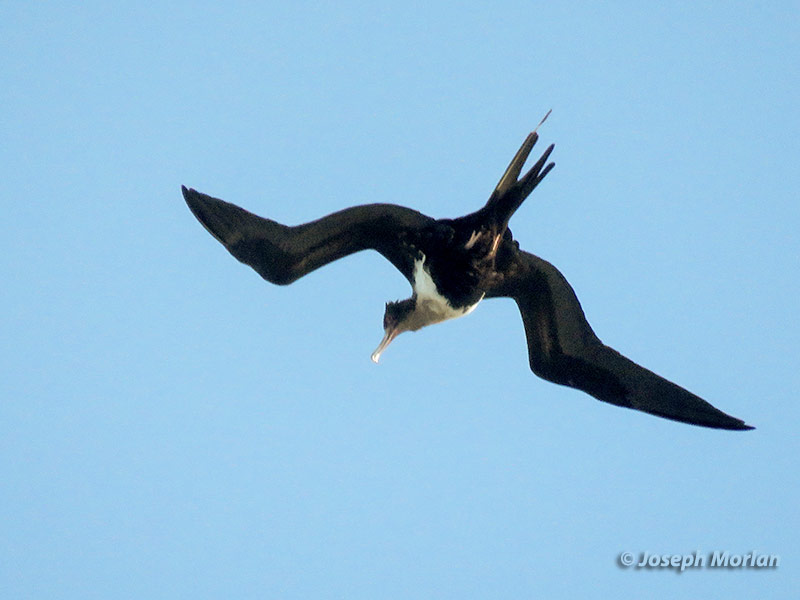

Frigatebirds are inveterate pirates, often chasing down boobies and terns to steal their food. Although they have webbed feet, they are apparently unable to swim. They catch all their food in the air or from the surface of the water. Their long forked tails provide dual rudders for quick twists and turns. Five subspecies are recognized. This is presumably F. m. palmerstoni which breeds in the Western and Central Pacific. However these races are doubtfully distinguishable in the field in that they differ only in size and bare-part coloration. This is a female, showing a white chest patch and gray throat. Note red orbital and pale pink feet. They can be confused with immature Lesser Frigatebird (F. ariel) but distinguished by rounded, not wedge-shaped white belly and minimal white armpit tabs. Great Frigatebird chicks are dependent on the adults for nearly a year after hatching, an exceptionally long time for any bird. Canon PowerShot SX60.
References
Gregory, P. (2017) Birds of New Guinea, Including Bismarck Archipelago and Boughainville. Lynx Edicions, Barcelona.
Gauger Metz, V. H. and E. A. Schreiber (2002). Great Frigatebird (Fregata minor), version 2.0. In The Birds of North America (A. F. Poole and F. B. Gill, Editors). Cornell Lab of Ornithology, Ithaca, NY, USA. https://doi.org/10.2173/bna.681
Howell, S.N.G., Lewington, I. & Russell, W. (2014) Rare Birds of North America. Princeton Univ. Press
Howell, S. N. G. and K. Zufelt (2019) Oceanic Birds of the World: A Photo Guide. Princeton Univ. Press.
Orta, J., Kirwan, G.M., Garcia, E.F.J. & Boesman, P. (2019). Great Frigatebird (Fregata minor). In: del Hoyo, J., Elliott, A., Sargatal, J., Christie, D.A. & de Juana, E. (eds.). Handbook of the Birds of the World Alive. Lynx Edicions, Barcelona. (retrieved from https://www.hbw.com/node/52670 on 9 November 2019).
Pratt, H.D., Bruner, P., and Berrett, D.G. (1987) A Field Guide to the Birds of Hawaii and the Tropical Pacific. Princeton University Press.
Pyle, R.L., and P. Pyle. 2017. The Birds of the Hawaiian Islands: Occurrence, History, Distribution, and Status. B.P. Bishop Museum, Honolulu, HI, U.S.A. Version 2 (1 January 2017) http://hbs.bishopmuseum.org/birds/rlp-monograph/